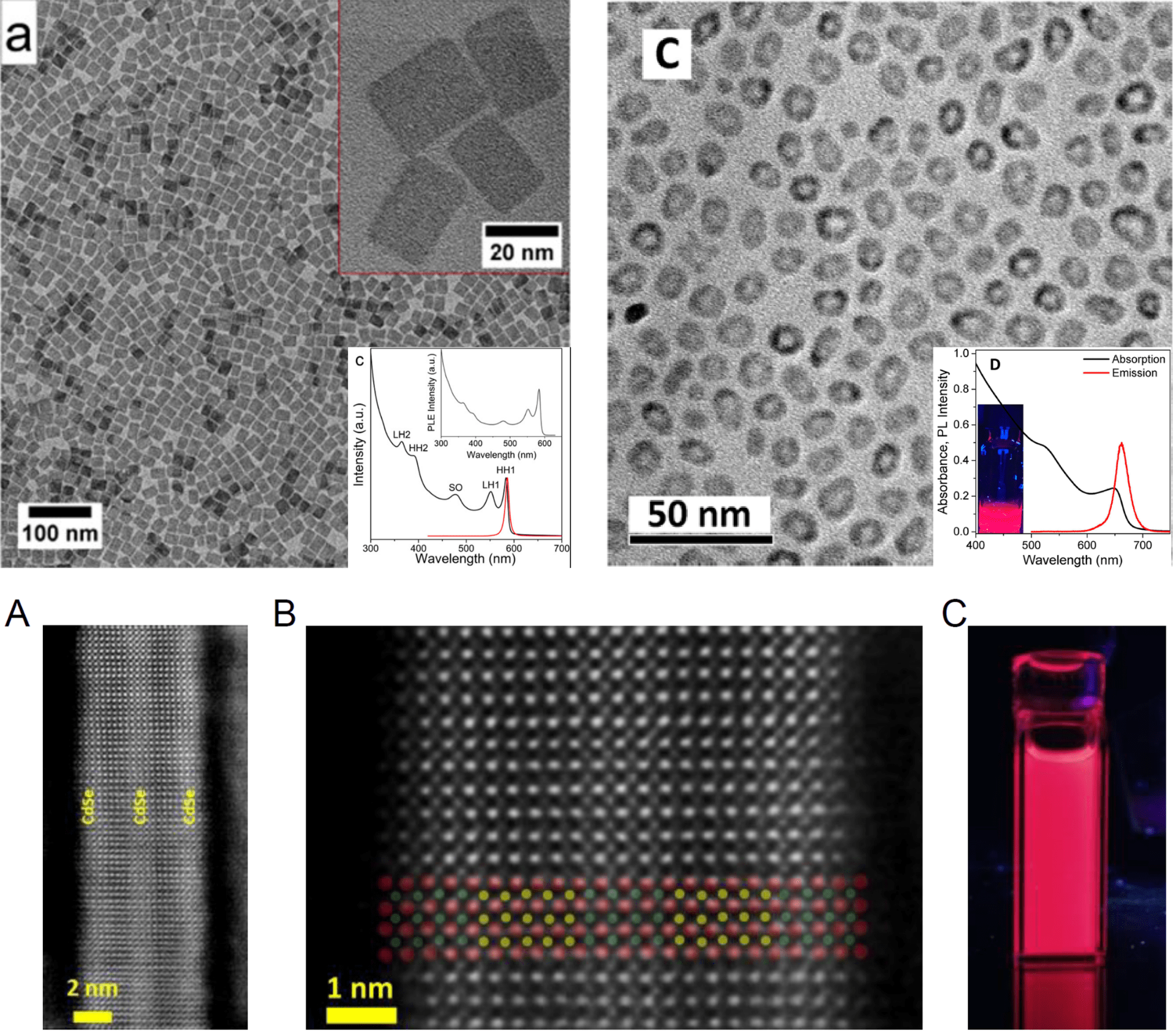Synthesis of Novel Nanostructures
Nanocrystal Synthesis
Producing high-quality nanoparticles with novel characteristics is essential for utilizing them in many applications. Nanoparticles of various shapes, sizes, and chemical compositions have been introduced by our research group. Recent work has explored the synthesis of semiconductor nanomaterials, especially II-VI and III-V semiconductors.
II-VI Semiconductor Nanoplatelets
In the last decade, II-VI semiconductor nanoplatelets have become famous for their monodisperse optical characteristics from their uniform thicknesses. Recently, we discovered that a new population of CdSe nanoplatelets can be synthesized, that CdSe nanoplatelets can be transformed into quantum rings, and that precise “digital nanoheterostructures” can be manufactured from CdSe nanoplatelets using the colloidal atomic layer deposition (c-ALD) technique.

(Top Left) TEM images and optical spectra of CdSe nanoplatelets emitting 585 nm. (Top Right) TEM images and optical spectra of CdSe quantum rings.
(Bottom) (A, B) HAADF-STEM images of “digital nanoheterostructure” nanoplatelets. The structure includes complex layers of 4CdSe/1CdS/3ZnCdS/1CdS/4CdSe/1CdS/ 3ZnCdS/1CdS/4CdSe. (C) Photoluminescense emission of the structure under UV illumination.
III-V Semiconductors
III-V semiconductors are robust materials that are already utilized in many devices in the form of thin films. However, their nanomaterials are not as popular in practice because it is difficult to making them with narrow size distribution. Our recent progress on reaction conditions has enabled the synthesis of monodisperse InSb and InAs quantum dots. Furthermore, using molten salt as solvents for III-V quantum dots has led to our discovery that gallium can exchange indium to create In1–xGaxP and In1–xGaxAs quantum dots.
